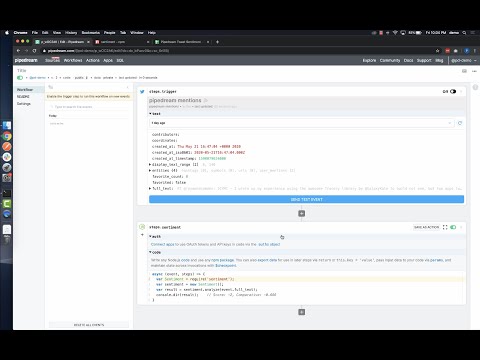What do you want to automate
with Google Sheets and Opsgenie?
Prompt, edit and deploy AI agents that connect to Google Sheets, Opsgenie and 3,000+ other apps in seconds.
Trusted by 1,000,000+ developers from startups to Fortune 500 companies
Popular Ways to Connect Google Sheets with Opsgenie#
Popular Google Sheets and Opsgenie Triggers#
Emit new event each time a comment is added to a spreadsheet.
Emit new event each time a row or rows are added to the bottom of a spreadsheet.
Emit new event each time a row or rows are added to the bottom of a spreadsheet.
Emit new event each time a row or cell is updated in a spreadsheet.
Popular Google Sheets and Opsgenie Actions#
Add a single row of data to Google Sheets. See the documentation
Adds a note to an existing alert in Opsgenie. See the documentation
Add multiple rows of data to a Google Sheet. See the documentation
Get all values or values from a range of cells using A1 notation. See the documentation
Overview of Google Sheets#
The Google Sheets API allows for the creation, reading, updating, and deletion of data within Google Sheets, enabling a robust platform for spreadsheet management and data manipulation. Through Pipedream, you can craft serverless workflows that respond to various triggers, such as webhook events, emails, or scheduled times, to interact with Google Sheets. This synergy can automate reporting, synchronize data across applications, manage inventory, track leads in a CRM, or even conduct survey analysis by updating and retrieving sheet data on the fly.
Connect Google Sheets#
import { axios } from "@pipedream/platform"
export default defineComponent({
props: {
google_sheets: {
type: "app",
app: "google_sheets",
}
},
async run({steps, $}) {
return await axios($, {
url: `https://www.googleapis.com/oauth2/v1/userinfo`,
headers: {
Authorization: `Bearer ${this.google_sheets.$auth.oauth_access_token}`,
},
})
},
})
Overview of Opsgenie#
The Opsgenie API enables automated incident management and alerting to streamline response actions. It allows you to create, update, and manage alerts, as well as configure and query users, schedules, and on-call rotations. Integrating Opsgenie with Pipedream opens up possibilities for orchestrating complex workflows, such as incident triggering from various sources, auto-update of tickets, synchronization with other tools, and much more, all in a serverless environment.
Connect Opsgenie#
import { axios } from "@pipedream/platform"
export default defineComponent({
props: {
opsgenie: {
type: "app",
app: "opsgenie",
}
},
async run({steps, $}) {
return await axios($, {
url: `https://${this.opsgenie.$auth.instance_region}.opsgenie.com/v2/teams`,
headers: {
"Authorization": `GenieKey ${this.opsgenie.$auth.api_key}`,
},
})
},
})
Related Videos#



Community Posts#


